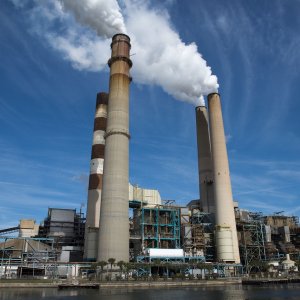
LNG Projects Achievable With the Right Infrastructure: TC Energy
 By Karin Dilge | Journalist and Industry Analyst -
Wed, 03/22/2023 - 15:35
By Karin Dilge | Journalist and Industry Analyst -
Wed, 03/22/2023 - 15:35
TC Energy is partnering with state utility CFE in an effort to modernize the country's energy systems and support the industry. This year, TC plans to invest US$2.1 billion to advance construction of the Southeast Gateway project, as well as the Villa de Reyes and Tula pipelines. Additionally, TC is working on expanding the North Baja XPress system by 500 MMcf/d to supply Sempra Infrastructure's Energía Costa Azul LNG export terminal, which is currently under construction.
The growing number of projects supported by Mexican partners will create a "backbone of infrastructure" that could enhance US natural gas pipeline exports to Mexico, as more proposed LNG projects pile up on the Pacific and eastern coasts. However, energy experts in Mexico are concerned about the country's ability to support several terminal projects while building critical infrastructure. François Poirier, President and CEO, TC Energy, believes that investor demand and financial support will likely determine the initial cap on Mexico's export volumes, rather than its capacity. Poirer also believes that developing the linear infrastructure to deliver gas to LNG terminals for export is achievable as long as LNG projects themselves receive approval.
TC Energy plans to make a billionaire investment to expand North American natural gas pipeline capacity throughout the decade. Poirier believes market conditions are changing to favor expansions and greenfield projects that boost LNG exports. He also expects to see regulatory support for more infrastructure as around 75-80% of TC Energy's investments are currently connected to natural gas businesses.
While other energy executives and some regulators emphasized the need for permitting reforms and more dialogue on the importance of natural gas projects, Poirier believes that attitudes are already changing, particularly after the invasion of Ukraine. Volatility in Europe helped strike a balance between the focus on sustainability and energy security. Moreover, he notes that in the US, both parties are voicing support for reforming the permitting process, acknowledging that it needs to improve. He believes that infrastructure is part of the supply chain for getting natural gas to those who need it and, while some projects have faced opposition, some operators have successfully finished substantial projects by working with stakeholders and regulators.
Last year, TC Energy launched US$6 billion worth of infrastructure projects with a similar for this year, which Poirier believes is tangible evidence of the company's ability to get projects permitted, built and put into service. He emphasizes the importance of being agile and strong communicators in dealing with the multitude of stakeholders who want and expect a say in the sanctioning of infrastructure.
According to Poirier, TC Energy plans to increase North American takeaway capacity from 14Bcf/d to 21 Bcf/d, a 50% increase, throughout the decade. The company also expects to increase capital expenditures by roughly 30% year-on-year, mostly focused on gas pipeline expansions. The Gulf Coast is at the center of these expansions, where TC Energy plans to grow its US market share by 5-35% by the end of the decade through a combination of brownfield expansions and strategic newbuilds.
















